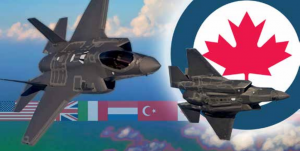2014-03-06 Dr. Danny Lam and Dr. Brian Paul Cozzarin
The Canadian F-35 procurement represents the largest peacetime acquisition of new aircraft for Canadian forces since the Korean War.
Securing industrial benefits from military procurement is essential for advanced industrialized nations, and it has long been Canadian industrial policy to do so.
For the CF-18 program, “offset” contracts were negotiated, valued at 2.7 billion Canadian dollars or 110 percent of the worth of the initial contract. According to the US Department of Defense (DOD), Canadian participation in the Joint Strike Fighter (JSF) program offered the promise of leveraging an investment of US $150 million into $8–10 billion of incremental revenues for Canadian industry over the life of the program.
However, procurement of the F-35 was a “no bid” sole-source contract that precluded any possibility of bargaining both for price and industrial benefits under the offset model.
Issues that resulted in the DOD structuring of the JSF program to preclude traditional offsets include recognition of the nonmarket nature of defense procurement in the context of acquisition reform and the changing nature of defense systems.
Partners like the United Kingdom, Israel, and Norway adapted to this new “no offset” model in securing industrial benefits.
As of 2012, Canada has considerable incremental opportunities to develop similar programs that will enhance industrial and regional benefits from the JSF program as long as the offset model is not considered the norm for twenty-first-century programs.
For the complete article see the following:



